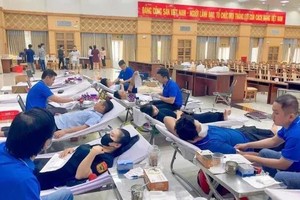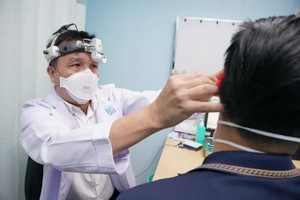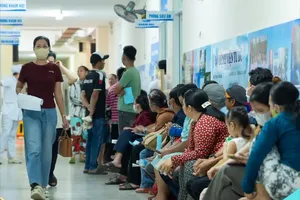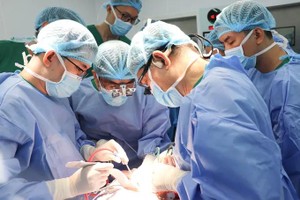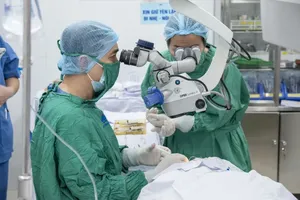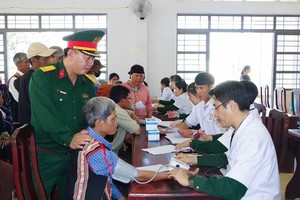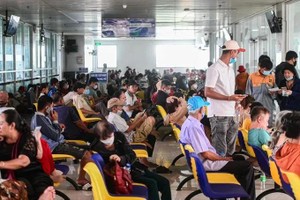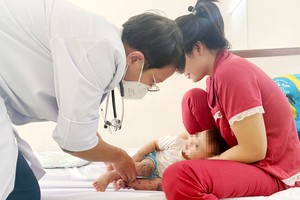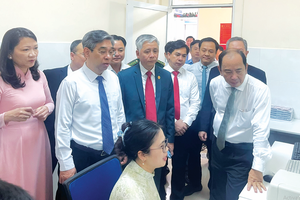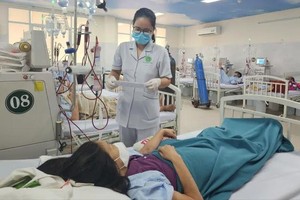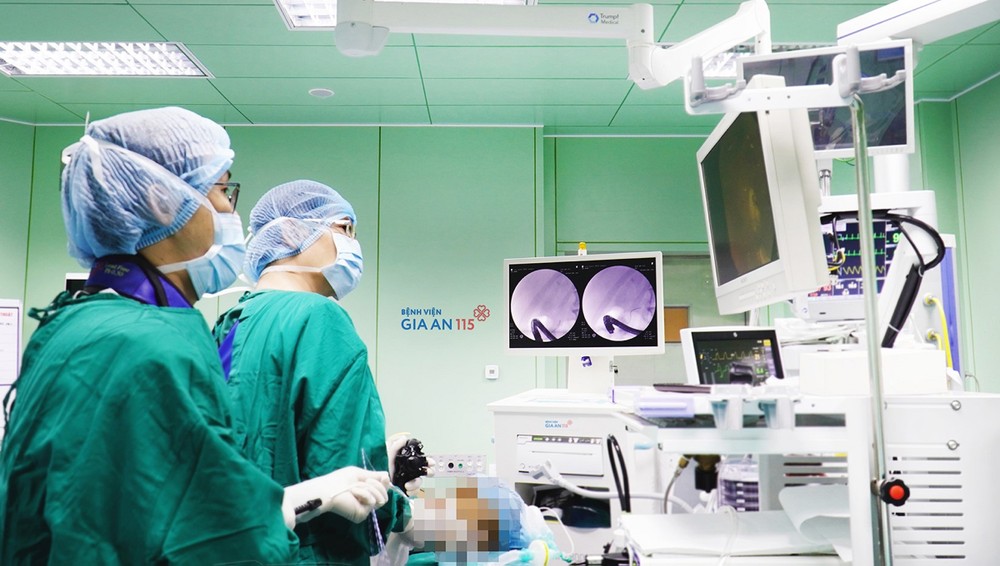
After 25 years of calling for social contributions in the healthcare, the southern metropolis has emerged as a success story. Its non-public health system, comprised of 129 hospitals and thousands of private medical and pharmaceutical establishments, makes a significant contribution to the health of city residents and those in surrounding areas.
Private healthcare facilities are mushrooming
Trieu An Hospital was among the first private healthcare providers established after the Ministry of Health and the Ho Chi Minh City People's Committee implemented the policy of social contributions in the healthcare sector to take care of people.
After 23 years of operation, Trieu An Hospital has expanded from its original capacity of 200 beds to 400 beds, now fully equipped with modern facilities. The hospital has adopted a hospital-hotel model to better serve patient needs. Additionally, Trieu An Hospital has established 22 specialized departments and a medical diagnostic center capable of examining and treating thousands of patients annually.
Numerous private healthcare institutions, including An Sinh Hospital, Van Hanh Hospital, Saigon ITO Hospital, Hoan My Hospital, City International Hospital, Gia An 115 Hospital, Tam Anh Hospital, Vinmec Hospital, Xuyen A Hospital, and Nam Saigon Hospital, among others, have been established to alleviate the burden on the public healthcare system. Additionally, thousands of private general and specialized clinics have emerged to further support this effort.
According to Associate Professor Tang Chi Thuong, Director of the Ho Chi Minh City Department of Health, by the end of 2024, the city had more than 8,000 general clinics and 66 private hospitals, making a significant contribution to the health care of city dwellers.
“Five to ten years ago," Associate Professor Tang Chi Thuong emphasized, "private hospitals often transferred critically ill patients to public facilities. Now, they are capable of treating serious and complex cases, including cardiovascular, neurological, stroke, obstetrics, and neonatal care. Private healthcare providers often have equipment and technology that surpasses that of public hospitals, reducing the need for patients to seek treatment abroad."
The private healthcare system collaborates with the city's healthcare sector by not only providing medical examinations and treatments but also contributing to disease prevention efforts. It remains prepared to engage in medical initiatives whenever the State and Ho Chi Minh City require assistance.
Private hospitals are increasingly recognized as key players in attracting international patients and fostering medical tourism, with institutions like City International Hospital, My Duc Hospital, and Gia An 115 Hospital leading the way. Although Tam Anh General Hospital was established later than others, it is making significant strides in the healthcare landscape of Ho Chi Minh City, particularly in service quality and specialized development. The hospital has invested heavily in state-of-the-art medical technology and has successfully recruited top experts across various specialties, establishing dedicated centers of excellence.
Highlights in cooperation and association
Since 2000, the City Party Committee and the People's Committee of Ho Chi Minh City have had a policy of supporting loan interest rates through stimulus programs for industries and sectors, especially the programs calling for social contributions in investment in the fields of health and education as an incentive to encourage industries and sectors to develop according to the city's strategy.
Officially launched in 2009, this program provided units with loans from the Ho Chi Minh City People's Committee. These loans, with 100 percent interest rate support for up to seven years, facilitated new construction, renovations, expansions, and the purchase of modern, specialized, high-tech equipment.
In the health sector, there are 117 participating projects, with a total loan capital of more than VND5,800 billion. Since then, many new, specialized technical services, many high-tech examination and treatment areas have been formed and effectively implemented at Oncology Hospital, Binh Dan Hospital, Trauma and Orthopedics Hospital, Hung Vuong Hospital, Tu Du Hospital, Eye Hospital, University of Medicine and Pharmacy Hospital, Cho Ray Hospital, People's Hospital 115 Hospital, Gia Dinh Hospital through the city's stimulus loan capital.
Regarding the health development policy according to Resolution No. 93/NQ-CP of the Government.
Ho Chi Minh City has initiated four public-private partnership projects. These collaborations involve expertise sharing between People's Hospital 115 and Hoa Lam International Hospital Company Limited (currently known as Gia An 115 Hospital Company Limited); between the Oncology Hospital and Hong Duc General Hospital as well as between Children's Hospital 2, Hong Duc General Hospital, and CHAC 2 Medical Joint Stock Company.
Ho Chi Minh City’s healthcare system is seeing significant improvements through strengthened public-private partnerships, according to Associate Professor Dr. Tang Chi Thuong, Director of the city’s Department of Health. The collaboration has helped reduce pressure on overcrowded public hospitals, optimize private sector resources, and enhance service quality to meet growing healthcare demands.
In a push for further investment, the health sector has recently called for funding in 13 public-private partnership (PPP) projects, with a total investment of VND12,266 trillion (US$487.66 million).
Ho Chi Minh City's health sector is ramping up investment through PPP, recently calling for funding in 13 projects totaling VND12.266 trillion.
Additionally, under equipment installation partnerships, 109 projects are currently providing services with a total value of VND1.1 trillion, of which private partners contribute VND997 billion.
Public-private partnerships have swiftly addressed capital shortages in hospitals, easing the burden on the state budget while equipping medical facilities with modern technology. This investment enhances diagnostic accuracy, improves treatment effectiveness, and aids in the early detection of diseases—ultimately reducing mortality rates.
Vulnerable groups, including the poor, near-poor, children, and social policy beneficiaries, also benefit from these initiatives, with health insurance covering service costs. Additionally, the model helps alleviate overcrowding at higher-level hospitals, reducing patient travel expenses and wait times.
